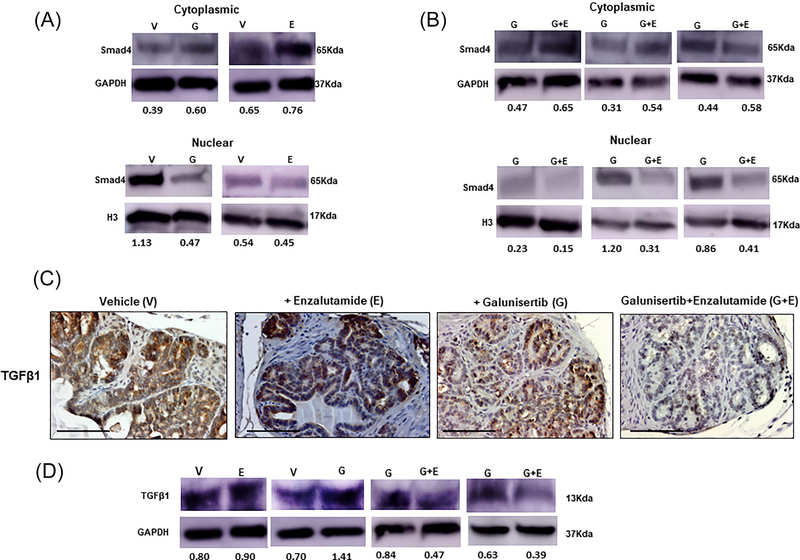FIGURE 4.
Impact of galunisertib and antiandrogen treatment on Smad4. Panel A, Western blot analysis that blocking the TßRI receptor, galunisertib (G) given alone markedly reduces Smad4 protein levels in both the cytoplasmic and nuclear fractions of prostate tumor lysates compared to tumors from control mice, while enazultamide monotherapy (E) has no effect on Smad 4 expression or localization. Panel B shows the results from Western blot analysis of prostate tumor lysates (second “mini”-trial) revealing that the combination treatment of galunisertib with enzaluamide (G+E) led to a further decrease in nuclear Smad 4 compared to galunisertib alone (higher than twofold). The results of protein profiling by Western blotting are representative of three independent experiments for each of the three clinical mini-trials. Protein expression was assessed by densitometric analysis of band intensity (numerical values shown at the bottom of blot). Panels C and D indicate the results of the immunohistochemical staining and Western blot analysis, respectively for TGF-β1 ligand expression in prostate tumors after the various treatments. In response to galunisertib alone there was enhanced intensity in the immunoreactivity of TGF-β1, compared to controls. Treatment with combination of galunisertib and enzalutamide led to a dramatic decrease in tissue protein TGF-β1 levels compared to controls or either drug given alone (Panel C; magnification ×400). The numerical results of TGF-β1 protein expression from Western analysis of total cell lysates from treated and untreated prostate tumors are shown at the bottom of the blots (panel D). Enzalutamide alone (E) did not have a detectable effect on TGF-β1 expression, while in response to galunisertib there was a twofold increase in ligand levels compared to controls; in contrast the combination treatment (G+E) led to a marked reduction of TGF-β1, compared to drug alone (E).

